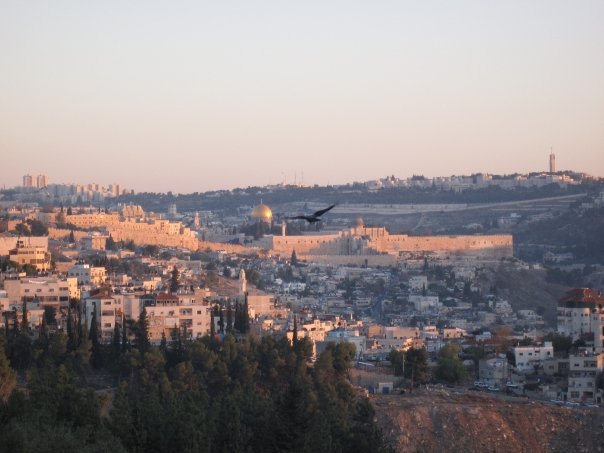Musings from Students of the Pardes Institute of Jewish Studies in Jerusalem
Posted on January 10, 2010 by David Bogomolny
It was a chilly morning, and I felt it. According to my tradition, I wrapped my tefilin around my left bicep, down my forearm, and around my middle finger. The morning davening is the longest of the three daily services, and I prefer to daven at a comfortable pace, pronouncing every syllable carefully… so I stood, davening with my tefilin on in the chilly morning air for some time (perhaps 45 minutes – I’m not quite sure).
A friend of mine once explained to me that she tends to have poor circulation in her fingers so her hands are often cold. She prefers mittens to gloves because she finds that her fingers warm one another when they’re clasped together. I remembered her explanation that morning because my tefilin prevented the fingers of my left hand from clasping together, and the chilly air nipped at them, stinging. The stinging felt grounding, human, as did the comforting warmth once I completed my davening and removed my tefilin.

—–
Later that Friday, I visited Yad Vashem with a friend for the first time since I was on a Birthright trip more than three years ago. It was particularly liberating to walk through the museum without a large group or tour guide, navigating ourselves through the displays and taking the time to discuss our impressions and ideas.
I recall once visiting The Har Herzl National Cemetery with my mother as a youth, watching her cry for the deaths of the many young soldiers that had given their lives in defense of Israel, wondering why I felt… nothing.
The older I get, the more emotional I become. As a seventh grader, learning about the Shoah (the Holocaust) in Hebrew school, I was barely emotionally affected by lessons and stories of hatred, tragedy and death… and then I taught the very same class (I took over for my Hebrew school teacher) for two years as an adult, and I cried over and over again at the videos and lesson plans. For me, adulthood brought with it heightened sensitivity.
It now feels as though I’ve integrated much of the tragedy of the Shoah. Some of the exhibits at Yad Vashem brought tears to my eyes and caused my heart to beat more heavily, but I generally felt a constant, soft ache for the great loss… I’ve had, after all, a lot of exposure to Shoah material. Still, I learned some new information about the specifics of the Holocaust in particular countries across Europe, and one exhibit in particular happened to give me pause.
Towards the end of WWII, the Nazis forced the emaciated, sick Jewish prisoners out of concentration camps in ‘Death Marches’, on foot, across hundreds of kilometers of frozen terrain, bringing many to their deaths through forced, inhuman overexertion and starvation. Yad Vashem’s description of these frigid, torturous journeys struck me, and it took me a moment to realize why. It was only that morning that I’d wanted to protect my fingers from the slight chill of the Jerusalem morning, conscious of my 45 minute discomfort, appreciating life and sensation, wincing slightly from the air’s sharp, chilly sting…
It struck me at the ‘Death Marches’ exhibit at Yad Vashem that day that I will never be able to comprehend the Shoah. Would that nobody ever experience such terrible Evil again.